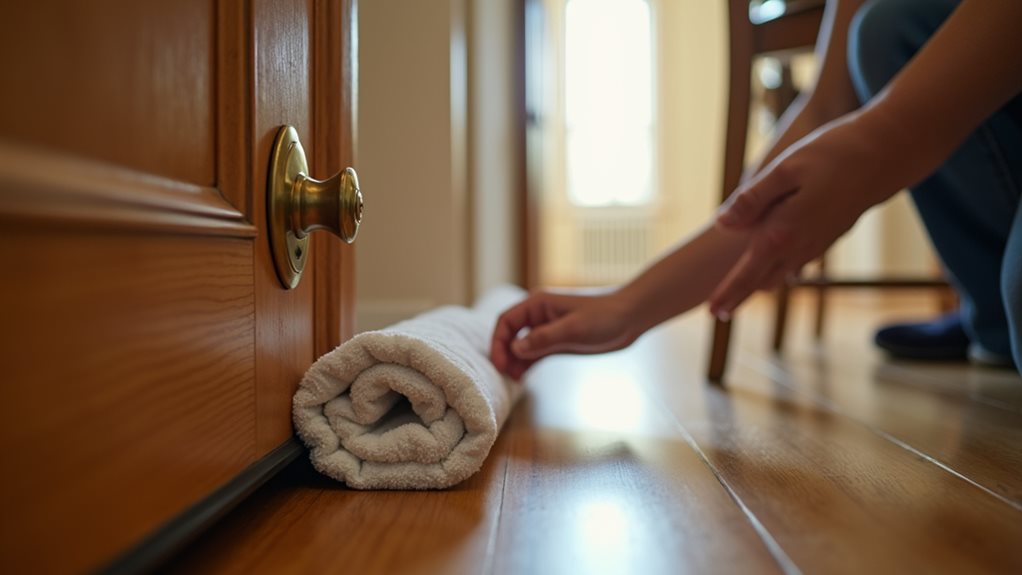You can quickly secure a door from the inside using a deadbolt or slide bolt, a rubber wedge under the door, or a heavy chair or strap braced against the handle; for outward-opening doors, add a keyed deadbolt or a door security bar. For stronger, lasting protection, replace with a solid-core door, mortise an upgraded strike plate with 3–4 inch screws, and add hinge bolts or wrap plates to reinforce the jamb — keep going and you’ll learn more practical upgrades.
TLDR
- Turn or engage the existing deadbolt or thumbturn lock firmly until it clicks if the door has one.
- Slide a portable door lock or latch into the strike to add quick temporary security without tools.
- Place a heavy chair, wedge, or rubber doorstop under an inward-opening door to block forced entry.
- Loop a strap or portable jammer around the doorknob and under the floor to resist opening from outside.
- For stronger long-term security, install reinforced strike plates and 3–4 inch screws into the door jamb.
Simple Temporary Solutions for Quick Security

Often, quick measures are all you’ll have time for, so it helps to know a few reliable, low-effort options you can deploy immediately to secure a door from the inside. Use a rubber wedge under an inward-opening door for grip, prop a heavy chair against the handle, fashion a bent fork into the latch, or employ a portable jammer or strap around exposed hinges for fast, temporary security. Additionally, consider reinforcement techniques to enhance the door’s overall security. A simple add-on like installing a reinforced strike plate can greatly improve long-term resistance to forced entry.
Permanent and Stronger Door Reinforcements
While quick fixes can buy you time, permanent reinforcements give you lasting protection by strengthening the door, the frame, and the hardware that hold them together.
Use 3–4 inch screws for hinges and strike plates, mortise larger strike plates flush, add hinge bolts and wrap plates, and upgrade to solid-core doors or door armor kits. Structural support gear should also be considered for enhancing the overall security of the door system.
Check alignment and test operation after installation.
Reinforcing the lock area, hinges, and jamb is critical because these weak points are the most common targets for forced entry.
Final Note
You’ll want to choose methods that suit your needs: use simple temporary solutions for quick, short-term security, and install permanent reinforcements when you need lasting protection. Assess the door, frame, and hardware, then pick options that match your budget and skill level; professional installation increases effectiveness for heavier-duty measures. Maintain and test any solution regularly, address wear or damage promptly, and balance convenience with safety so your door remains reliably secure without creating new hazards.